

Chapter
5
Time requirement of chapter: 60 minutes
TRAFFIC PERCEPTUAL SKILLS
Chapter 5 will challenge you with searching for traffic hazards and identifying potential or immediate hazards. The chapter will help you to predict the possible effect of a possible hazard, decide what evasive maneuver is most appropriate for a potential hazard, and how to execute the evasive action in time to avoid a collision.
To read video transcript CLICK HERE |
|
||||||||||||||||||||||||||||||||||||||||||||||||||||||||||||||||||||||||||||||||||||||||||||||||||||||||||||||
There are many hidden factors drivers do not consider when they operate
a motor vehicle. As part of this chapter we want to address these important
factors.
Distractions:
At one time or another, all of us have been distracted while driving. The National Highway Traffic Safety Administration reports that 99% of all traffic crashes in the United States are due to driver error. Many of these crashes are simply a result of driver distraction. Becoming distracted is not that hard to do. Simply gazing out the window, searching for the perfect mood music on the ride home, answering a cell phone call, or biting into a sloppy burrito can cause our focus on driving to be interrupted. What’s so disturbing is that most drivers don’t consider themselves distracted.
Below are some ways to reduce distractions to your driving:
|
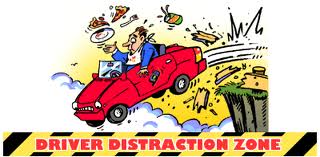 |
Cell Phones:
In the United States, over 212 million people are currently using cell phones and the number is continually rising. Increased reliance on cell phones has led to a rise in the number of people who use the devices while driving. There are two dangers associated with driving and cell-phone use.
|
First, drivers must take their eyes off the road while dialing or setting up a hands-free call. Second, people can become so absorbed in their conversations that their ability to concentrate on the act of driving is severely impaired. Motorists using cell phones while driving are 4 times more likely to get into crashes. A recent study from the University of Utah, concludes that taking on a cell phone while driving is as dangerous as driving impaired, even if the phone is a hands-free model. It doesn’t make any difference if the phone is hand-free. It’s the listening and thinking of responses that makes the difference, not the nature of the instrument. |
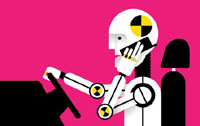 |
Talking with passengers while driving is different since the passengers are aware of your driving envoirment and will probably lighten up on conversation if red lights are flashing in the distance. If you’re on a cell phone, the other person may not even know you are driving and may increase the complexity, or emotional content, of the conversation without realizing you are in a very precarious situation.
They have no way of knowing you are concentrating on the conversation, when you should be concentrating on your driving and that you can’t devote equal attention to both.
Obviously, the safest choice is to never operate a cellular telephone while driving. If the call is important enough to answer, then it is important enough to pull off in a safe and secure location to talk.
Here are some additional ideas:
Resources: http://www.hsrc.unc.edu/safety_info/distracted_drowsy/Cell_Phone_Use_NC_2002.pdf, http://abcnews.go.com/Technology/DyeHard/story?id=889064&page=1, http://www.nhtsa.dot.gov/people/injury/research/wireless/c2.htm, http://www.aaapublicaffairs.com/main/Default.asp?CategoryID=3&SubCategoryID=35&ContentID=39, http://www.ccohs.ca/oshanswers/safety_haz/cellphone_driving.html, http://unews.utah.edu/p/?r=062206-1, http://unews.utah.edu/p/?r=121907-2
Fatigue:
According to the National Sleep Foundation’s Sleep in America poll, 60% of adult drivers, about 168 million people, say they have driven a vehicle while feeling drowsy in the past year, and more than one-third, (37% or 103 million people,) have actually fallen asleep or nodded of at the wheel! In fact, of those who have nodded off, 13% say they have done so at least once a month, and 4%, approximately eleven million drivers, admit they have had a collision, or a near collision, because they dozed off or were too tired to drive.
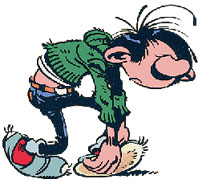 |
The National Highway Traffic Safety Administration conservatively estimates drowsy driving annually results in 1,550 deaths, 71,000 injuries, and $12.5 billion in monetary losses. Sleep related crashes are most common in young people, especially men, adults with children, and shift workers. Men are more likely than women to drive while drowsy and are almost twice as likely as women to fall asleep while driving. Adults with children in the household are more likely to drive drowsy than those without children. Shift workers are more likely than those who work a regular daytime schedule, to drive to or from work drowsy at least a few days a month. |
According to a study by the AAA Foundation for Traffic Safety, people who sleep six to seven hours a night are twice as likely to be involved in a crash as those sleeping eight hours or more, while people sleeping less than five hours increased their risk four to five times.
|
Fatigue is a general term commonly used to describe the experience of being “sleepy,” “tired,” “drowsy,” or “exhausted.” While all of these terms have different meanings in research and clinical settings, they tend to be used interchangeably in the traffic safety and transportation fields. There are many underlying causes of sleepiness, fatigue and drowsy driving, including: sleep loss from prescriptions, interrupted or fragmented sleep, chronic sleep deficit, circadian factors associated with work schedules, undiagnosed or untreated sleep disorders, time spent on a task, the use of sedating medications; and, the consumption of alcohol when already tired. These factors have cumulative effects and a combination of any of these can greatly increase one’s risk for a fatigue-related crash. |
 |
Sleepiness or Fatigue Causes the Following:
Warning signs of drowsy driving:
Counter measures for drowsy driving:
Before the trip:
During travel:
|
The American Medical Association has stated that all
Humans need |
Resources: http://www.sleepfoundation.org/site/c.huIXKjM0IxF/b.2417141/k.2E30/The_National_Sleep_ Foundation.htm, http://www.pdhealth.mil/veterans/downloads/fatigue.pdf, http://www.aids.org/factSheets/551-Fatigue.html, http://www.roadandtravel.com/safetyandsecurity/drivingfatigue.html, http://www.nysgtsc.state.ny.us/drow-ndx.htm#prevent, http://www.sleep-deprivation.com/articles/causes-of-sleep-deprivation/driver-fatigue.php, http://www.nhtsa.dot.gov/people/injury/drowsy_driving1/Drowsy.html, http://www.ama-assn.org/amednews/2001/02/19/hlsa0219.htm, http://www.ama-assn.org/amednews/2008/03/24/hlsb0324.htm
Stress:
The American Medical Association has stated that 70 to 85 percent of all illnesses are stress related. Stress is an unavoidable consequence of life. Stress is not always necessarily harmful. It’s very much like the stress on a violin string. Not enough stress produces a dull, raspy sound.
| Too much tension makes a shrill, annoying noise or snaps the string. However,
just the right degree of pressure can create a magnificent tone. Similarly, we all need
to find the proper level of stress which allows us to perform optimally and
make melodious music as we go through life. Stress is the “wear and tear” our bodies experience as we adjust to our continually changing environment. It has physical and emotional effects on us, and can create positive or negative feelings. When we are stressed, the central nervous system triggers the release of stress chemicals that prepare us for emergency action. |
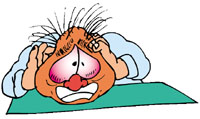 |
In response to these chemicals, our blood pressure goes up, muscles tense up; stored fat for energy is released; and the immune system is suppressed. The suppression of the immune system prevents it from making antibodies which attack the body’s own tissues in the event of an injury.
This physical reaction to stress is a survival trait known as “fight or flight” stress response. Thousands of years ago, it helped our ancestors protect themselves from wild animals and other physical threats. As a positive influence, stress can help compel us to action; it can result in a new awareness and an exciting new perspective.
 |
Today, most of our stress is annoying rather than life threatening. Yet, left unmanaged, stress can cause serious damage to our bodies. The events that provoke stress are called stressors; and they cover a whole range of situations everything from outright physical danger to making a class presentation or taking a semester’s worth of your toughest subject. Long-term stressful situations can produce a lasting, low-level stress that’s hard on people. The nervous system senses continued pressure, and may remain slightly activated and continuing to pump out extra stress hormones over an extended period. This long term release can wear out the body’s reserves, leave a person feeling depleted or overwhelmed, weaken the body’s immune system, and cause other problems. |
Stress may begin while driving, or before the driver has even begun to enter the vehicle. A number of factors can serve to cause stress and these include a headache, heavy traffic, running late, and even aggravating music from another vehicle.
Individuals can be stressed because of other circumstances in their lives such as financial concerns, problems with children, marriage problems, problems at work and the list goes on and on.
As a negative influence, it can result in feelings of distrust, rejection, anger, and depression; which in turn, can lead to health problems such as headaches, upset stomach, rashes, insomnia, ulcers, high blood pressure, heart disease, and stroke.
With the death of a loved one, the birth of a child or grand child, a job promotion, a new relationship, or living situation, we experience stress as we re-adjust our lives. In so adjusting to different circumstances, stress will help or hinder us depending on how we react to it.
To relieve stress, we sometimes resort to habits which can cause poor health such as smoking, overeating, taking drugs, or abusing alcohol. These recommendations are some examples of ways to help manage stress.
Driving and Stress:
Road conditions, time
constraints, heavy traffic, poor weather conditions, construction zones, vehicle
performance and reliability and the driving behavior of other drivers can all
add to the stress we are experiencing.
Are you stressed and maybe not
aware you are? Below are some common signs of stress.
Can’t sleep or do
not sleep well
Unexplained weight gain or loss
Heartburn
Unable to
concentrate at times
Irritable
Dizzy
Forgetting things
Chronic
headaches
Often sick
Withdrawn
Aching neck, back, or legs
Emotional
at home or work
Say or do things you regret later
Fatigued
These
are all signs that stress may be taking a toll on your life.
Managing Stress:
Take a stand against over-scheduling. If you’re feeling stretched, consider cutting out an activity or two, opting for just the ones that are most important to you.
|
Be realistic. Don’t try to be perfect – no one is. And expecting others to be perfect can add to your stress level, too (not to mention put a lot of pressure on them!). If you need help on something, a repair or home improvement project, ask for it. Get a good night’s sleep. Getting enough sleep helps keep your body and mind in top shape, making you better equipped to deal with any negative stressors. Because the biological “sleep clock” shifts during adolescence, many teens prefer staying up a little later at night and sleeping a little later in the morning. But if you stay up late and still need to get up early for an appointment, you may not get all the hours of sleep you need. Learn to relax. The body’s natural antidote to stress is called the relaxation response. It’s your body's opposite of stress, and it creates a sense of well-being and calmness. A person can trigger the relaxation response by learning simple breathing exercises. Building time into your schedule for activities such as reading or having a hobby or just taking a walk can help you relax. Treat your body well. Experts agree that getting regular exercise helps people manage stress. Eat well to help your body get the right fuel to function at its best. Under stressful conditions, the body needs its vitamins and minerals more than ever. |
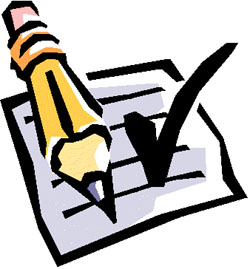 |
Watch what you’re thinking. Your outlook, attitude, and thoughts influence the way you see things. Is your cup half full or half empty? A healthy dose of optimism can help you make the best of stressful circumstances. Even if you’re out of practice, or tend to be a bit of a pessimist, everyone can learn to think more optimistically and reap the benefits.
Solve the little problems. Learning to solve everyday problems can give you a sense of control. But avoiding them can leave you feeling like you have little control and that just adds to stress. Develop skills to calmly look at a problem, figure out options, and take some action toward a solution. Feeling capable of solving little problems builds the inner confidence to move on to life’s bigger ones – and it and can serve you well in times of stress.
Build Your Resilience. Ever notice that certain people seem to adapt quickly to stressful circumstances and take things in stride? They’re cool under pressure and able to handle problems as they come up. Researchers have identified the qualities that make some people seem naturally resilient even when faced with high levels of stress. If you want to build your resilience, work on developing these attitudes and behaviors:
Learn to think of challenges as opportunities and stressors as temporary problems,
not disasters. Practice solving problems and asking others for help and guidance
rather than complaining and letting stress build. Make goals and keep track
of your progress. Be optimistic. Believe in yourself, and let a little stress
motivate you into positive action to reach your goals.
Stress While Driving:
When considering stress management, there is no one thing that works for everyone.
Having a positive attitude is the best first step.
Try and identify the
cause of the stress. Then consider if having a negative reaction will change
the situation. Will the current situation be important five years from the current
date, one year, one month, one week, or even one day?
The reality is most of
the time we react negatively to a stressful situation while driving will not
change the situation and in the long run having very little impact on our lives.
Changing our negative self-talk to positive will normally relieve stress. Think about the comments you might make while driving.
Progressive muscle relaxation is
another method that can be used while driving. When a muscle has been tense for
a few seconds, its natural tendency is to relax. That’s what progressive muscle
relaxation is all about. You can tighten different muscle groups and then let
them relax. Repeat this exercise with different parts of the body making sure to
tighten and release each muscle at least six times.
Music can reduce stress, but make
sure it is the right type of music. Loud music with extreme amounts of a base
beat will have the opposite effect on your body. If you catch yourself getting
upset by talk radio, change the station or put in a favorite CD.
Sometimes, just counting to ten before reacting, will allow your mind time to cool off before making an improper or unsafe decision.
Resources: http://www.studygs.net/stress.htm, http://mentalhealth.samhsa.gov/publications/allpubs/ken-01-0097/default.asp, http://www.helpguide.org/mental/stress_signs.htm, http://www.mayoclinic.com/health/stress-symptoms/SR00008_D, http://health.yahoo.com/experts/theprinciples/9292/five-stress-reducing-driving-strategies, http://ezinearticles.com/?Tips-For-Easing-Stress-While-Driving&id=988506, http://www.ama-assn.org/amednews/2002/04/15/hlsa0415.htm
Emotions:
Let’s talk for a minute about how
emotions can affect our driving.
Emotions are strong positive and
negative feelings. Emotions are the attitudes we have about life situations.
Emotions tend to interfere with our ability to think clearly. Emotions create
mental distractions. They create inattentiveness and increase the risks we are
willing to take. Emotions cause us to lose concentration on the current task.
Emotions cause an increase in our heartbeat. A person's breathing quickens and
their digestion slows down. Usually our palms sweat and the body releases
adrenaline. After long periods of emotional upset, people will even feel
exhausted.
Letting our emotions control us can cause anger, anxiety,
fear, hate and grief. Our need to satisfy our emotions while driving many times
causes us to drive in a negative manner. We may speed even though we are in no
particular hurry, just because everyone is passing us. If someone does something
negative to us, our emotional response may be to get even, and cause us to drive
aggressively. We may become angry, anxious, fearful, frustrated, stressed or
revengeful.
The first and best method to control our emotions is to
maintain a positive attitude. By understanding our emotional make-up we may be
able to understand our feelings and then control them. We may also identify
driving situations that cause emotional stress and try to avoid times and
locations where the situations occur. By understanding that most drivers are not
out to get us or purposely try and get us mad. Realizing most drivers make
mistakes, just like you and I; and are under the same stresses, can help keep a
positive attitude.
Keeping a Positive Attitude is one way of
controlling emotions. Attitude is the way a person thinks about somebody or
something and the way they behave toward someone. It is their personal view or
opinion of something. It also describes their general emotional approach to any
person or situation. Having a negative attitude will normally result in negative
behavior, while having a positive attitude might change a negative situation into
a positive one, or at least one that does not result in any negative
consequences.
If a driver has a negative attitude about driving
situations which may arise while driving, these negative attitudes may lead to
aggression, anger, and frustration.
Below are some typical negative
driving attitudes:
- Speeding up to 10 mph over the posted speed limit
is not all that dangerous.
- I know if I try to keep the proper following
distance from the vehicle in front of me, another driver will hit the rear of my
vehicle.
- Keeping up with the flow of traffic is always the safest way to
drive.
- Sometimes, as a driver, it is necessary to violate the traffic laws so
other drivers do not get upset.
- The weather is the cause of most
collisions.
- Speeding saves time.
- If other drivers would not drive so
slow, in other words the speed limit, I could get where I am going on time.
-
I’ll be stuck in this traffic forever.
These are all examples of
negative driving attitudes. None of them are true of course, and may lead to
negative driving behaviors which may result in negative consequences.
Depending on the driving situation, a driver may become more aggressive. They may
have delayed reactions and misinterpret driving events. They may be focusing
their attention more on their current attitude than on the driving task, and miss
potential and immediate hazards. Their attitude may cause them to take risks
that they might not normally consider. If we are honest, most of us
drive more with our attitudes than with our intellect.
Resource:
http://www.dmv.org/how-to-guides/driving-and-emotions.php,
http://www.surak.org/emotions.shtml,
http://www.selfgrowth.com/articles/The_Effects_of_Emotions_on_Wellness.html
WHEN TO STOP DRIVING
How do you know when it is time
to stop driving?
Many of us wait until we are forced to stop by a
family member or law enforcement Take a look at these eight signs of trouble and
determine if and when you might consider it time to stop.
1) A pattern
of close calls, violations or collisions, even if they are minor.
2)
Increasing difficulty seeing things on the road; Difficulty adjusting to the glare of
oncoming headlights; Being surprised by passing
cars; running over curbs or going
through an intersection without seeing the stop sign.
3) Decline in physical abilities: Trouble turning your
head or shoulders to check before changing lanes; braking harder than normal for stop lights;
slow reactions; having a hard time keeping centered in the
lanes of travel.
4) Signs of emotional challenges of driving: Increasingly
nervous, frustrated and angry when driving.
5) Rapid onset of fatigue from
driving.
6) Signs of decline in mental abilities: Getting confused in simple
driving situations; getting lost; no longer using turn signals or mirrors;
hitting the accelerator or the brake instead of the planned pedal.
7) Increasing
confrontations with other drivers who honk their horns, tailgate or pass
aggressively.
8) Medical conditions that may directly, or as a result of
medications, may impair driving: Multiple sclerosis, Parkinson’s, Alzheimer’s,
uncontrolled diabetes, seizure disorders, sleep disorders, or Lou Gehrig’s
disease.
ALTERNATIVES TO DRIVING
Ending your
driving career before a serious crash or injury is not the end of the world. There are alternatives and
some suggestions to consider.
1. Check out
bus services, trams, subways systems and their schedules.
2.
Check the costs of utilizing a cab or personalized driver services.
3.
Check with churches, senior centers, and retirement communities to see if they
offer any type of transportation service.
4.
Check with the local area Agency on Aging for the services they provide.
5.
Make plans with family members or friends.
Aggressive Driving:
Initially the news media in the United States, reported only on Road Rage. However, Road Rage is only one of three factors in the aggressive driving problem in our country. There are actually two separate acts prior to the final act of Road Rage. The first step is developing road negativity. The second step is the act of driving aggressively. The last step is the criminal act of Road Rage.
 |
I. Road Negativity is a negative response to being encapsulated within the confined space of motor vehicle while being subjected to the stresses of driving. Drivers are more inclined to negative thoughts and feelings. They are more predisposed to yelling at a spouse, or partner, screaming at, or hitting, the child passengers. Such over reacting can be evoked by a variety of stimuli which could include feeling criticized for the manner of driving, children quarreling, whining, or complaining; a predisposition to becoming angry is created and provoked by another driver. II. The next step to Road Rage is the actual act of Aggressive Driving. The National Highway Traffic Safety Administration defines Aggressive Driving as operating a vehicle in a way that endangers or is likely to endanger people or property. Aggressive Driving in most states is not a criminal act, but falls under the guidelines of civil infractions. |
There are many things that cause people to become aggressive drivers. It may be construction work on the roadway that is slowing them down or causing traffic back-up.
Many times it is simply the stress from other areas of their life, such as an argument; a problem at work; at home; problems, concerns about their children’s behavior; or the death of a loved one.
They may have a predisposed negative attitude about traffic laws or police officers. They may see driving as a way to compete with others and a way to expand their ego. They may have the false belief that speeding saves a significant amount of time. They may have a personality type which explodes over trivial things, such as being honked at, someone taking too long to move when the traffic light changes to green, or even the loud music from another vehicle.
None of these things are worth getting angry over, but to a person who is already upset or under stress, any of these may be the “last straw”.
III. The final act is Road Rage. Road Rage is an extreme act of aggressive driving. It involves a deliberate decision to make an attempt to harm people or property. Road Rage usually involves a criminal act. In some states, including Florida, the Traffic Citation has a box to include Road Rage with the traffic offenses cited.
If you catch yourself starting to become more aggressive as you drive, here are some things you can do to help deal with the stress and frustration of driving.
|
 |
One of the best ways to prevent you and your passengers from becoming involved in an aggressive driving or Road Rage incident is to do everything you can not to participate or provoke another driver. You are responsible for your passengers' safety. Remember, it takes two to play the game. Here are some ways to avoid aggressive drivers.
Never stop and confront another driver. If you feel you are being followed, never drive home. Go to a public place and call the police.
Resources:http://www.nhtsa.dot.gov/people/injury/aggressive/Aggressive%20Web/brochure.html,
http://www.nhtsa.dot.gov/people/injury/enforce/aggdrv.html, http://www.nhtsa.gov/people/injury/aggressive/Symposium/exesummary.html,
http://en.wikipedia.org/wiki/Road_rage_(phenomenon), http://www.roadragers.com/what-is-road-rage.htm,
http://www.drivers.com/article/462/, http://www.ncsl.org/programs/transportation/aggrdriv.htm#fin,
http://www.kansashighwaypatrol.org/faqs/aggressive.html, http://www.aaafoundation.org/pdf/roadrage.pdf
CHAPTER 5 QUIZ
| Question 1 | Motorists who use cell phones while driving are 4 times more
likely to get into crashes.
|
||||||||
| Question 2 | The National Highway Traffic Safety Administration reports
that ___% of all traffic crashes in the United States are due to driver
error.
|
||||||||
| Question 3 | The American Medical Association has stated that all Humans
need a minimum of __ hours of proper sleep per night in order to function
at their peak productivity.
|